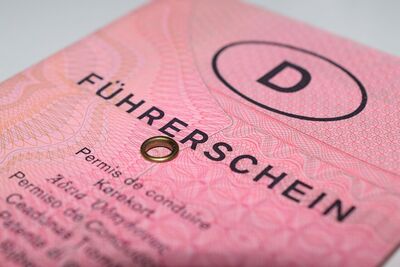News
Reform of EU driving licence rules

The European Parliament and the Council met again last Tuesday morning in Brussels. The negotiators discussed matters relating to transport, in particular the issue of driving licences. The discussions and results that were held and achieved on Tuesday morning are intended to reform the EU driving licence directive. The reason for this is the constantly rising number of accidents on the roads. This also refers to the associated road casualties, which also means road deaths. The goal that the EU wants to achieve is the so-called ‘Vision Zero’. The plan is not only to increase road safety, but also to reduce the number of road deaths to zero by 2050. The revised driving licence rules are part of a road safety package presented by the European Commission in March 2023.
The reform of the directive includes a number of innovations and changes.
Firstly, the EU wants to be better prepared for dangerous situations in road traffic. This refers to training courses designed to prepare road users to deal with such situations in a level-headed and sensible manner. Overall, road users are to be made more aware of the risks involved in road traffic, even though this refers to completely everyday situations such as pedestrians, children or cyclists crossing the road. The risks of driver assistance systems or blind spots, for example, should also be better explained. The former may have many advantages, but there are also some points that should be treated with caution.
Another aspect that is mandatory for every Member State is the EU-wide driving licence. The digital driving licence is to be designed as an ‘EU e-wallet’ and be available on smartphones. The EU Commission has 12 months after this reform comes into force to lay the foundations for this requirement. This refers to the necessary technical standards. Once this basic building block has been laid, the member states have 54 months to transpose the regulation into national law. However, there is no doubt that every Member State must play its part here. However, this does not rule out the possibility of continuing to apply for an embodied driving licence.
The EU will then apply the probationary period for novice drivers already practised in Germany, for example, to all member states. This should be at least two years. The penalties for traffic offences committed by novice drivers are also to be tightened. The ‘zero tolerance’ policy, on the other hand, is to be extended and not only apply to new drivers. With regard to alcohol and drugs, a 0% limit is to apply, meaning that consumption would be prohibited for anyone who still wants to drive their vehicle. The members of the Parliament thus appealed to the member states.
The EU has taken a softer stance on the age limit for lorry and bus driving licences. The minimum age will be lowered by three years in each case. In future, it will be possible to obtain a lorry driver's licence from the age of 18 and a bus driver's licence from the age of 21. However, a professional driver qualification certificate is required. The Parliament is also developing a similar proposal to that for passenger cars, which is also to be harmonised across the EU. So-called accompanied driving could be possible from the age of 17, but only on national territory and with an experienced escort.
In future, driving licences for motorbikes and cars will be valid for up to 15 years. However, a reduction to 10 years is possible if the certificate also serves as a national ID card. Lorry and bus driving licences will be valid for five years. The reform also addresses a highly controversial issue. Member states can shorten the validity of driving licences for drivers aged 65 and over. A medical check muss be carried out in order to obtain a driving license, but this can be replaced by a self-disclosure form or an alternative form when renewing car and motorbike driving licenses. Untruthful statement will be penalised, notes the European Parliament.
All that remains now is for the Council and Parliament to confirm it. From this point in time, the member states will then have 54 months to transpose the regulations into national law.
Source: Pixabay/drivers-license-2534805_1280
